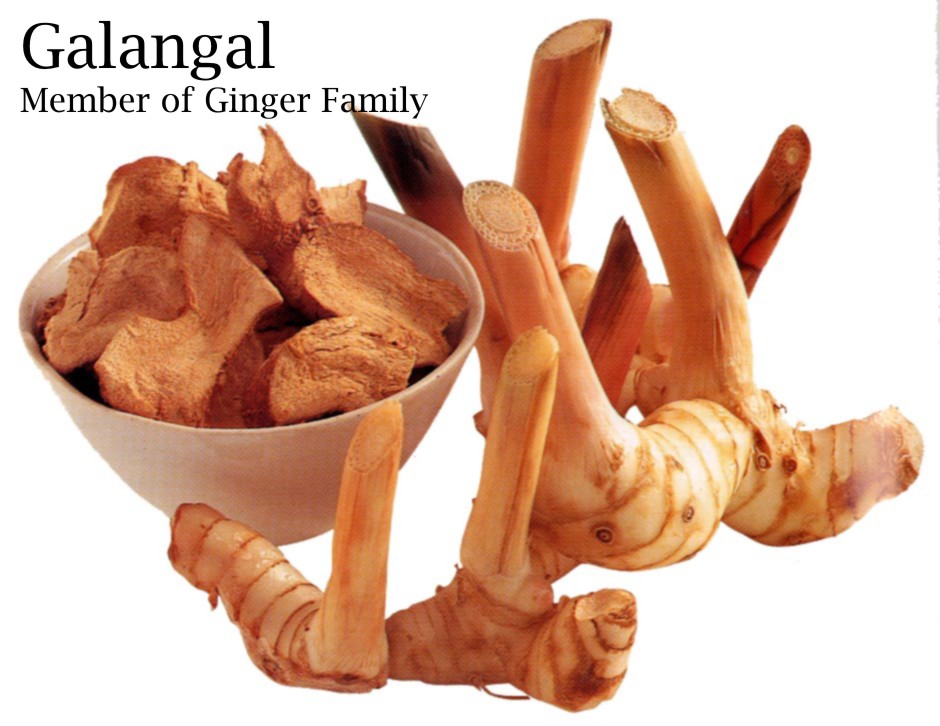
At first glance, one might take the rather root-like item in the picture to be a section of fresh ginger, but, while this particular rhizome is a member of the ginger family. It is, in fact, an Indonesian native known most commonly as ‘Galanga’.
Few North Americans are likely to be very familiar with it (it doesn’t appear in most grocery stores, generally), but anybody who has eaten in a Thai restaurant will probably recognize the unique taste, as it is common addition to many curry pastes and soups. It is, of course, widely used in Indonesian cuisine (where it is known as ‘lengkuas’), as well as in Malaysia and Vietnam. Other names for the spice are ‘Blue Ginger’, ‘Galangal’ and the much prettier ‘Galingale’, and in China, where it is occasionally used, it is known as ‘Sand Ginger’…
The cut section also has very much the appearance of fresh ginger, but the fibers are much denser and usually quite a bit harder to slice. The protuberances that grow from the body also leave some very hard pieces in the flesh and these will need to be cut away when using the rhizome in pastes or other preparations.
The rhizome is also available in dried, either in whole form, or else powdered, and the latter is often referred to, particularly in some cookery books, as ‘laos powder’. It is recommended, if buying the dried form, to choose the whole slices and grind them as needed as the commercially prepared powders lose their strength much more quickly.
The aroma of fresh galangal is quite a bit different from the taste and has an aromatically sweet quality with a very slight earthiness. It carries a scent that is a bit like a pungent, peppery kiwi fruit and there are faint notes of vanilla and dried lotus flowers. The taste, on the other hand is immediately rather like ginger but far more pungent and peppery with an echo of turpentine. After a moment, the ginger quality fades a little and the very floral, perfume-like quality that typifies the spice in cooked preparations asserts itself. When dried, the aroma is very much muted, but that unique aromatic perfume sweetness is more concentrated and stronger.
As noted, the rhizome is commonly used in blends with other spices, particularly as a paste for curries or, as will be familiar to restaurant-goers, in soup flavorings like the Thai favorite, Tom Yum soup. In a future post, I will use the rhizome I recently purchased to create a curry paste that captures the general palate of South-east Asia, while allowing the unique qualities of galanga to be fully appreciated…
Source:http://sybaritica.me













